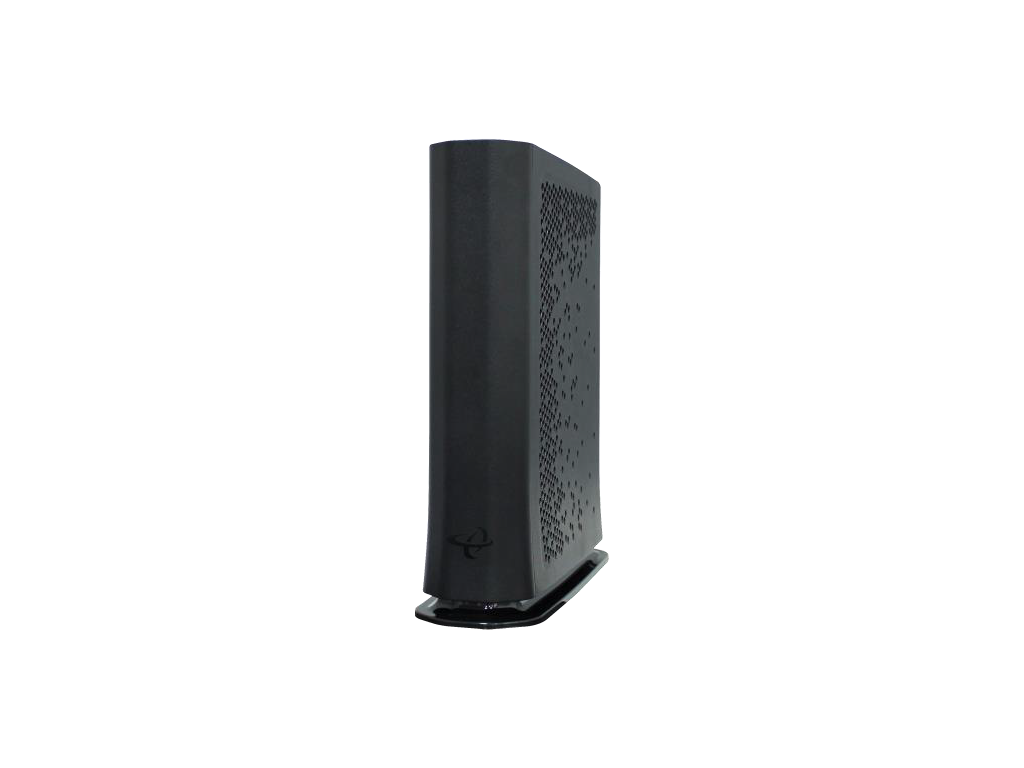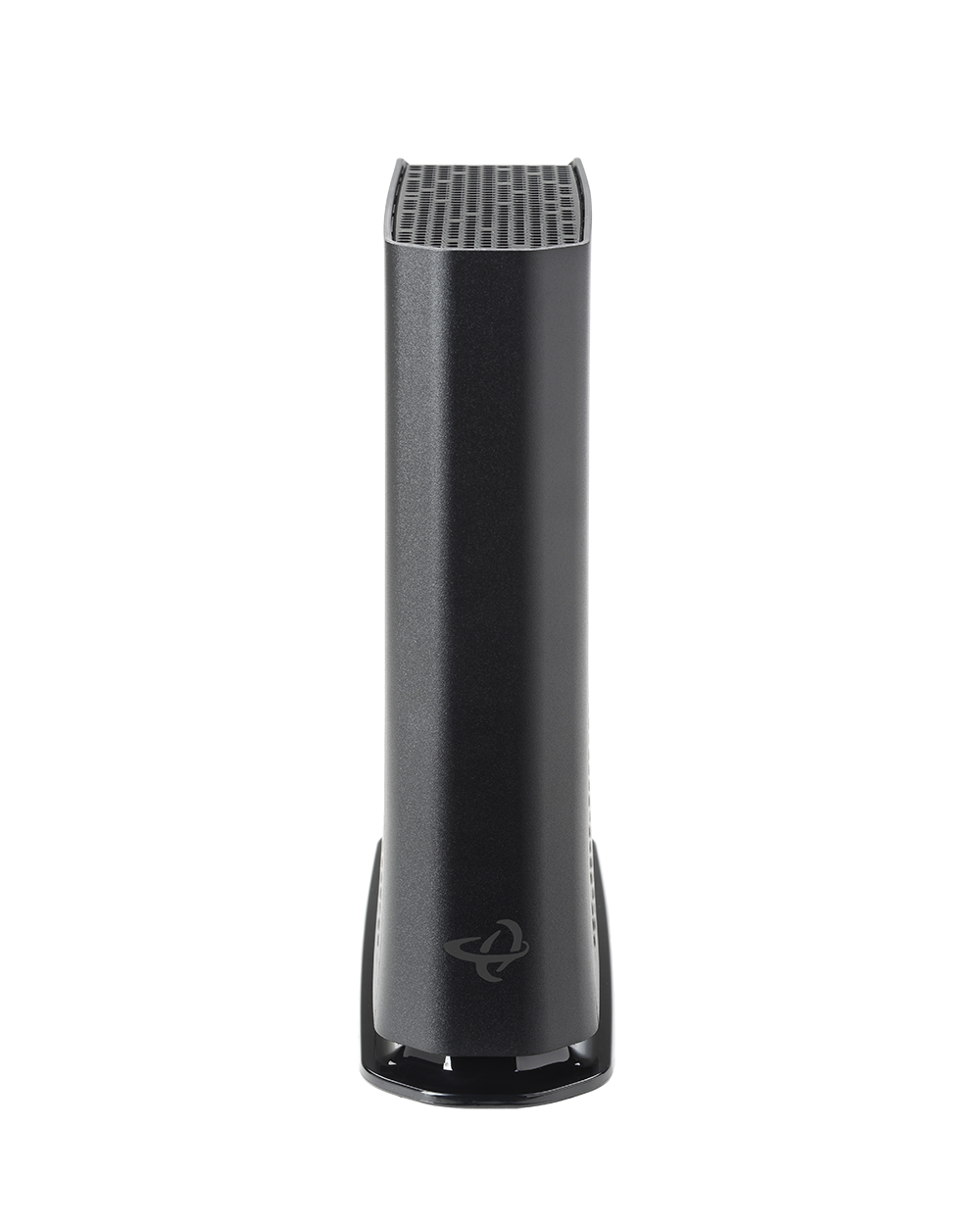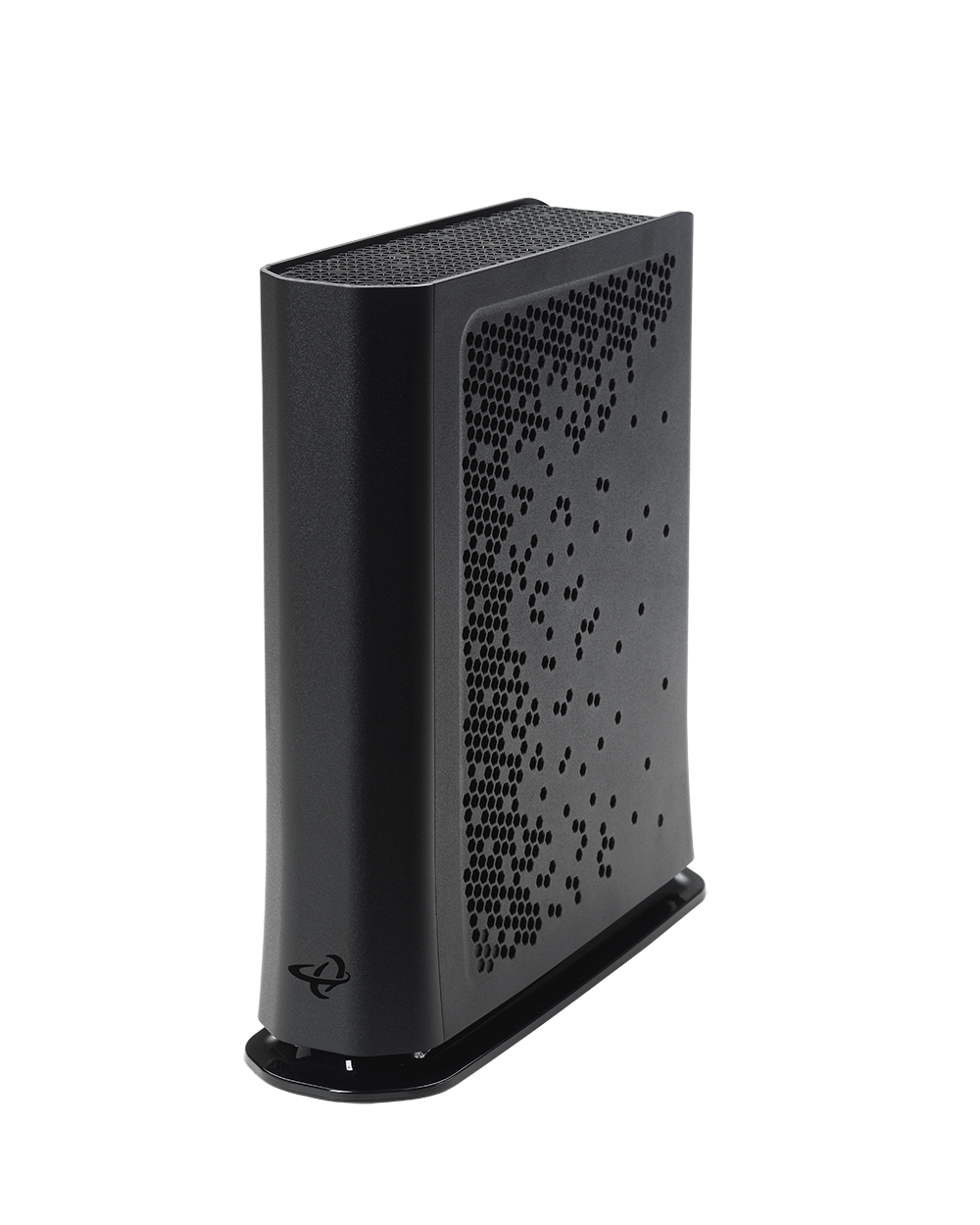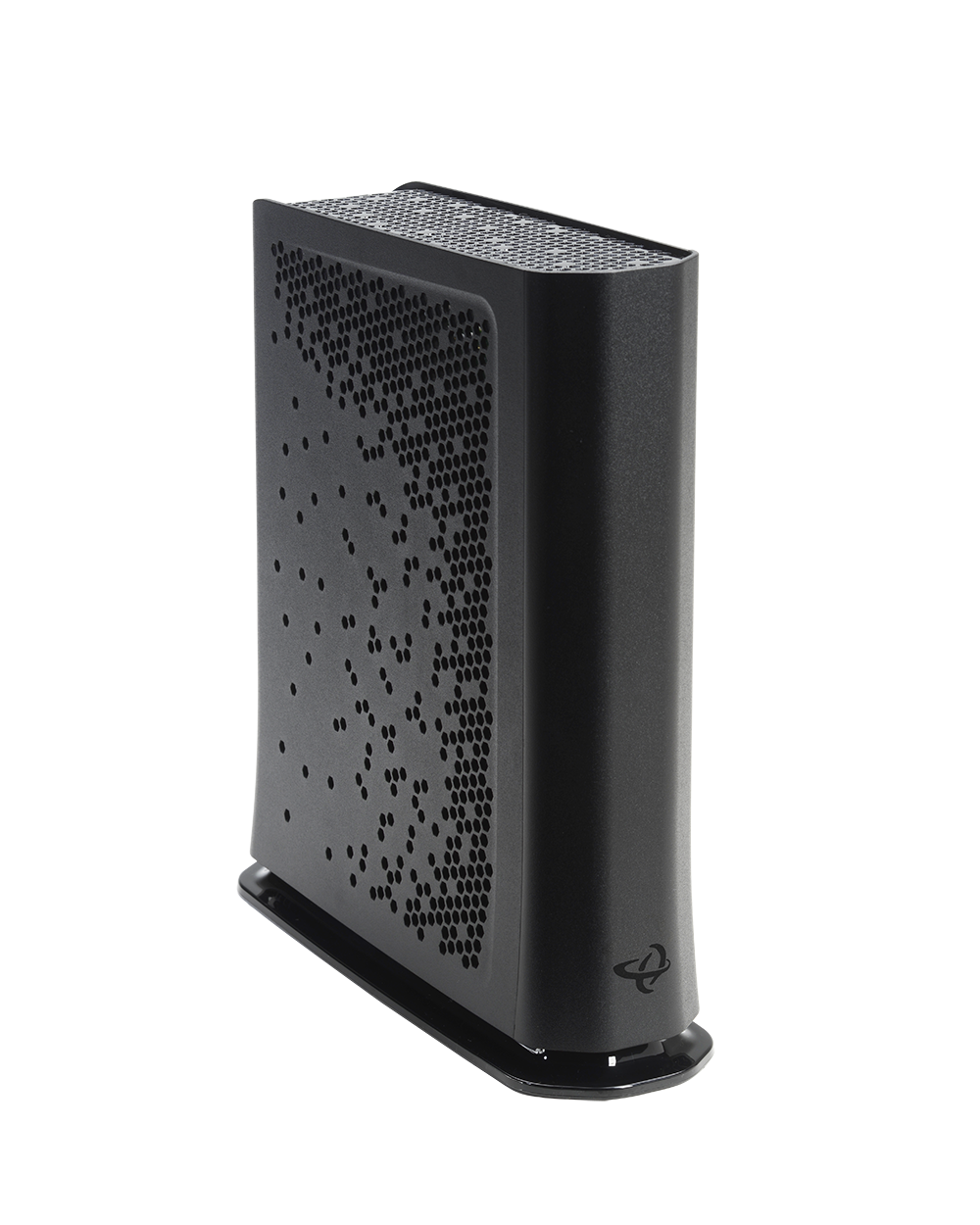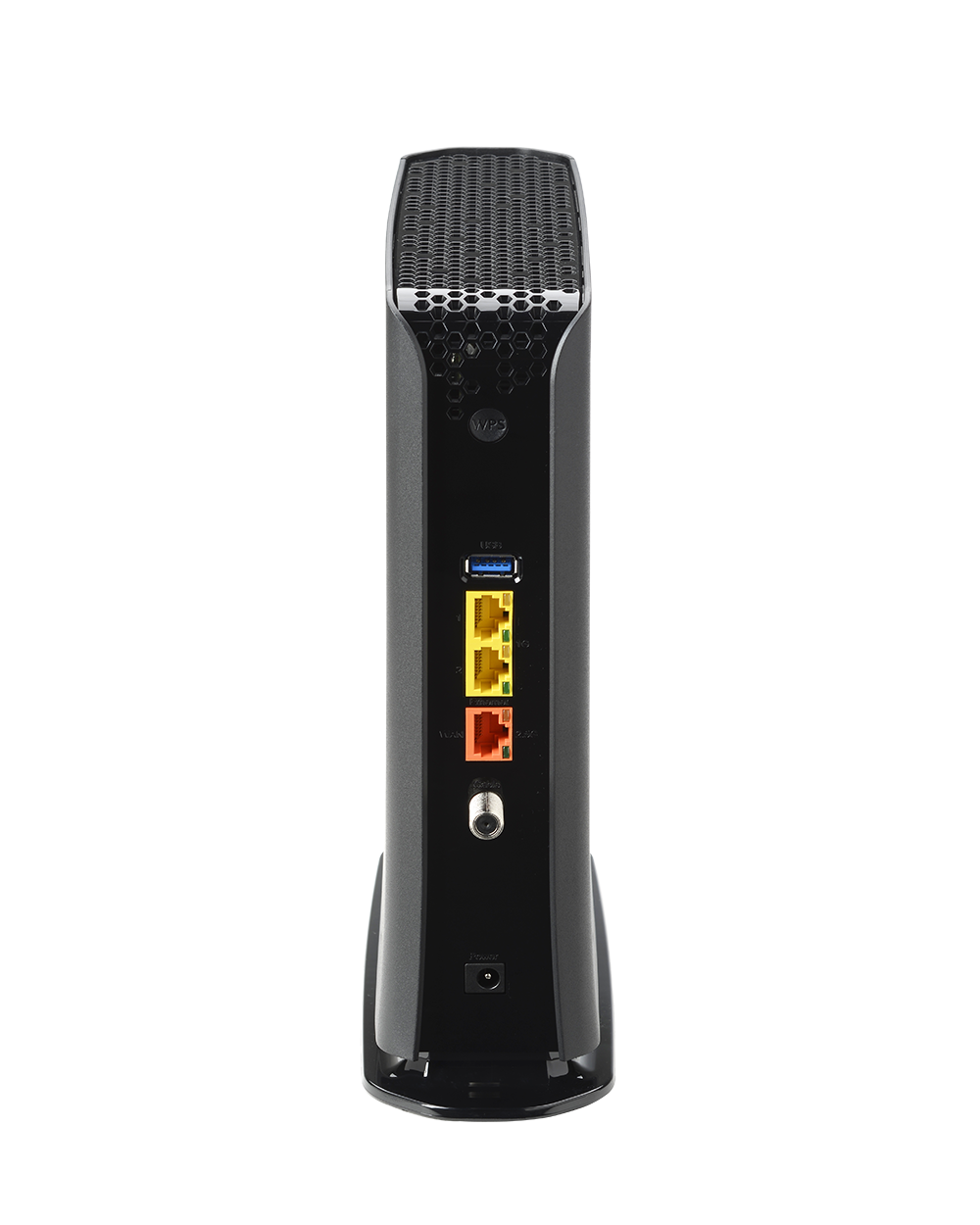Multi-Gig DOCSIS 3.1 Performance
With 2×2 OFDM/OFDMA and DOCSIS 3.0 32×8 bonding, the CODA-5712 delivers reliable multi-gigabit downstream capability while maintaining backward compatibility with DOCSIS 3.0 networks.
Switchable Upstream Frequency
Operators can toggle between 5–85 MHz and 5–204 MHz upstream paths, enabling smooth migration to high-split or future network architectures without swapping out hardware.
Robust Wi-Fi 6 Coverage
Dual-band Wi-Fi 6 with 4×4 5 GHz and 4×4 2.4 GHz radios delivers faster speeds, lower latency, and more efficient performance for multiple connected devices.
Built-in MoCA 2.0 Bonding
Turns existing coax wiring into a high-speed backbone—ideal for extending Wi-Fi coverage or providing stable wired connectivity in hard-to-reach areas.
Enhanced Wired Connectivity
Equipped with 1× 2.5 Gbps Ethernet port and 2× 1 Gbps ports for premium wired connections, plus a USB 3.0 port for media and NAS use cases.
Effortless Setup & Remote Management
Supports SNMP, TR-069, TR-369, HNAP, MyHitron+, and HitronCloud for simplified provisioning, diagnostics, and lifecycle management.
Benefits for Service Providers
- Comprehensive One-Box Solution: Combines DOCSIS 3.1, Wi-Fi 6, and MoCA into one device, reducing the need for multiple pieces of equipment.
- Future-Ready: Flexible upstream tuning ensures operators are prepared for evolving network upgrades.
- Hybrid Connectivity: MoCA delivers wired stability via coax while Wi-Fi 6 ensures high-capacity wireless coverage.
- Operational Efficiency: Streamlined deployments with remote management reduce support costs and truck rolls.
Key Specifications
- DOCSIS Support: DOCSIS 3.1 (2×2 OFDM/OFDMA) + DOCSIS 3.0 (32×8)
- Upstream Tuning: Switchable 5–85 MHz / 5–204 MHz
- Wi-Fi: Dual-band Wi-Fi 6 (4×4 5 GHz + 4×4 2.4 GHz)
- MoCA: Bonded MoCA 2.0 for high-speed coax-based wired uplinks
- Ethernet Ports: 1× 2.5 Gbps + 2× 1 Gbps
- USB Port: 1× USB 3.0
- Management: SNMP, TR-069, TR-369, HNAP, MyHitron+ app, HitronCloud
Documentation
Other Products to Consider
Product
Modem Type
Frequency
WiFi
Wired LAN
Voice
Learn More about Cable Modems & Routers
Cable Modem Router Must-Have Features
We wrote a similar article about the must-have key features for a cable modem. But this one focuses on the key features of a cable modem router. What’s the difference? Cable modem: A cable modem is a hardware device that uses a coax cable to connect your computer...
Should You Buy or Rent a Cable Modem?
When you connect with an Internet service provider (ISP) to set up Internet in your home, often they will try to make installation easier by offering a modem or modem/router for an additional fee per month. This seems like the best option and more convenient because...
Cable Modem Must-Have Features
If you are looking to set up Internet in your home for the first time or upgrade your current Internet service and set up, there are things to consider. One of those things is the hardware you need to make everything work. Even with wireless Internet, there is...
Cable Modems 101: Difference Between DOCSIS 3.0 & 3.1
If you have cable Internet, which is broadband from your Internet service provider (ISP) that uses coaxial cables to deliver bandwidth, then you have a DOCSIS cable modem. DOCSIS stands for Data Over Cable Service Interface Specification. It’s a cable technology...
Cable Modem vs Cable Modem Router
Is it better to have a modem, a router, or a combo modem router? Are there benefits to having a modem with a router, or should you keep them separate? These are the questions we are answering on this page. Cable modems and cable modem routers sound very similar but...
